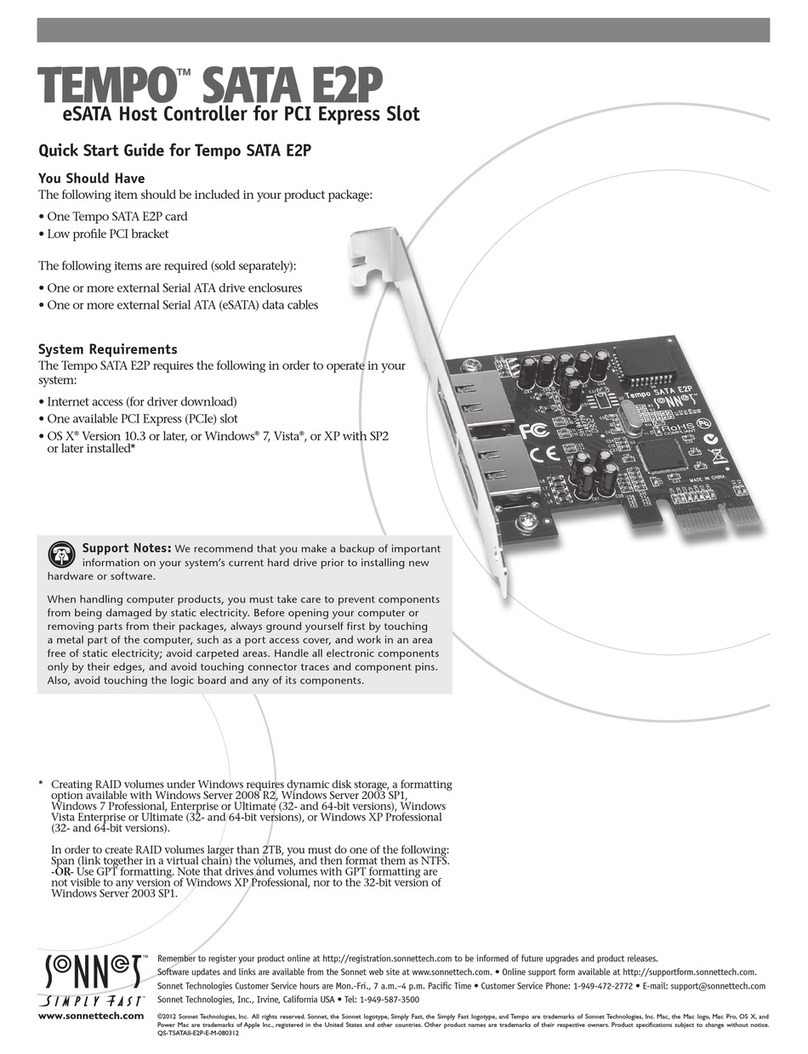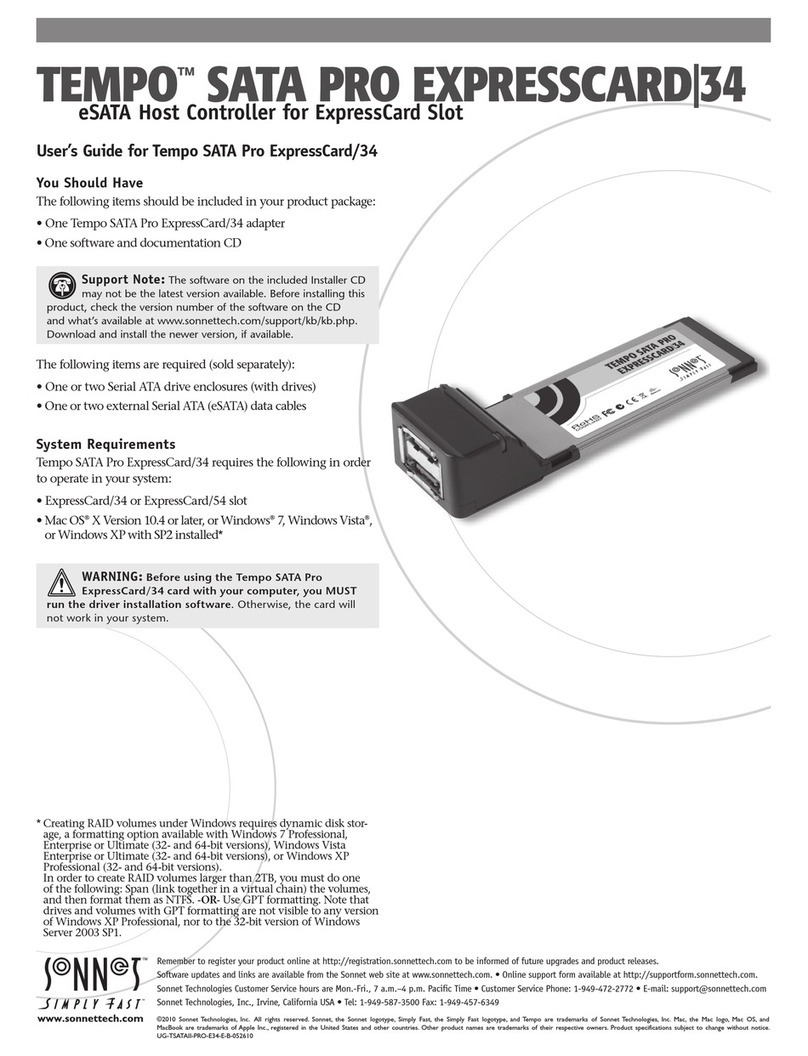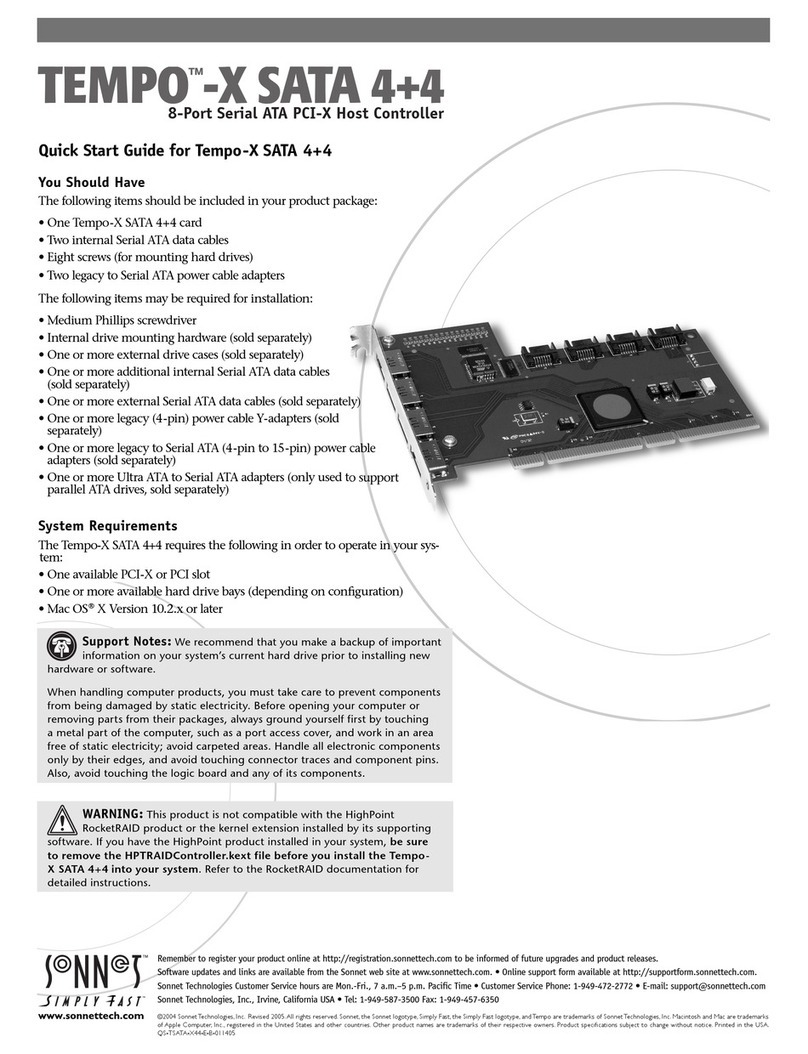
3
Software Installation Steps
Windows Vista Driver and Software Installation
This section describes the installation of drivers to support the
Sonnet RAID controller in systems running Windows Vista. If
your system is running Windows XP or Windows Server 2003,
skip to page 4.
1. Start Windows and log on as System Administrator.
2. Insert the included software CD. If an Internet Explorer
window appears, proceed to the next step. Otherwise,
perform one of the following:
• If an Autoplay window appears, click the Run autorun.bat
link to launch Internet Explorer.
• If a Windows Explorer window appears displaying the
CD-ROM’s contents, double-click the icon for the Autorun
batch file to launch Internet Explorer.
3. In the Internet Explorer window, click the Windows Drivers
link in the upper left corner.
4. Click the link for the drivers that apply to your computer.
5. Under the Windows Vista heading, click the Install Storport
Driver link.
6. If an Internet Explorer warning window appears, check or
uncheck the checkbox per your needs, and then click Yes.
Otherwise, go to the next step.
7. When the next window appears, click Run. If you have not
disabled User Account Control (UAC), a UAC window will
appear; click Continue.
8. When the ATTO Windows Driver Installer window appears,
click Install.
9. When the Windows Security window appears, click the
Always trust software from “ATTO Technology, Inc.”
checkbox, and then click Install.
10. After the driver installation is complete, a window will
appear with a message stating no adapter was detected; click
No to close the window and continue with the software
installation.
11. Back in the browser window click the Windows
Applications link on the left.
12. Click the Install Configuration Tool link.
13. When the File Download - Security Warning window appears,
click Run.
14. When the Internet Explorer - Security Warning window
appears, click Run. If you have not disabled User Account
Control (UAC), a UAC window will appear; click Allow.
15. If the installer window is hidden, click the Configuration
Tool button in the taskbar to bring the window to the front.
Click Next.
16. When the next window appears, click the radio button next
to the option to accept the license agreement, and then click
Next.
17. When the Choose Install Folder window appears, click Next
to accept the default installation location.
18. When the Choose Install Set window appears, click the Full
Installation icon, and then click Next.
19. When the Choose Java Virtual Machine window appears, click
the radio button next to the Choose a Java VM specifically
for this application option, and then click Next.
20. When the Pre-Installation Summary window appears, click
Install.
21. When the Install Complete window appears, click Done.
22. Back in the browser window, click the Install Windows
Utilities link.
23. If an Internet Explorer warning window appears, check or
uncheck the checkbox per your needs, and then click Yes.
Otherwise, go to the next step.
24. When the File Download - Security Warning window appears,
click Run. If you have not disabled User Account Control
(UAC), a UAC window will appear; click Continue.
25. When the Welcome to the ATTO HBA Utilities Setup Wizard
window appears, click Next.
26. When the Select Installation Folder window appears, either
accept the default location or choose a new one, and then
click Next.
27. When the Confirm Installation window appears, click Next.
28. After the utilities have been installed, an Installation
Complete window appears; click Close to exit.
29. Shut down your computer, and proceed to Hardware
Installation on page 6.



























